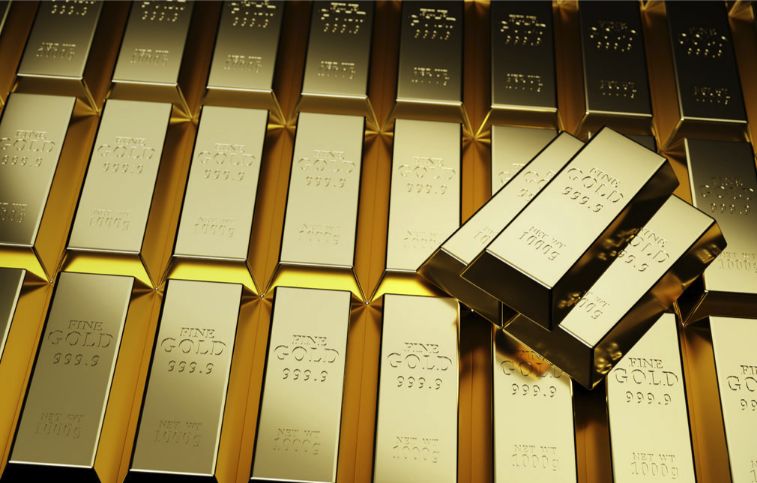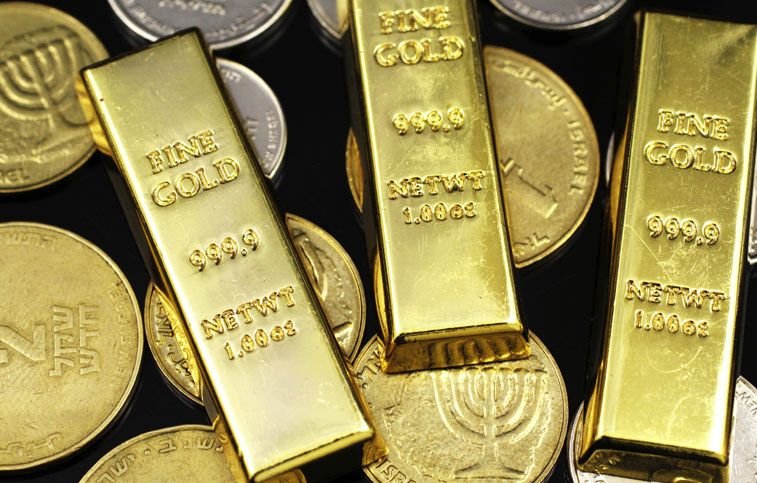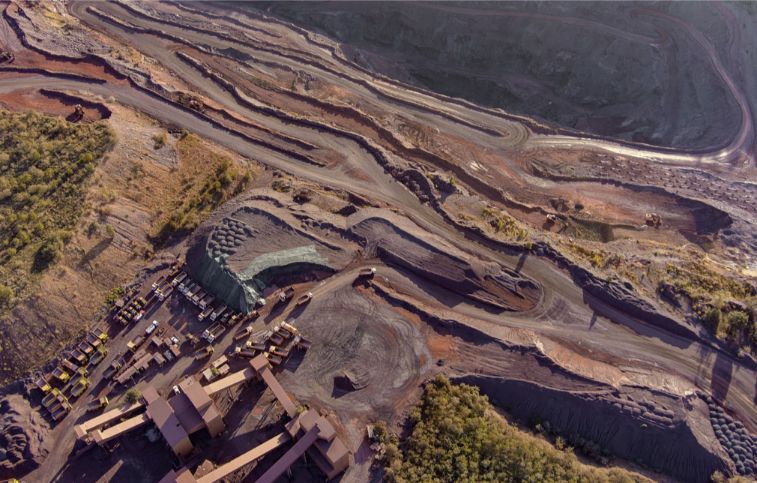Lithium, essential in producing compact, powerful batteries, is fuelling our future. The demand for lithium batteries for electric vehicles is expected to climb by 57% next year, and this will have a significant effect on lithium mining stocks.
The price of lithium has increased as the need for EV batteries continues to grow. In the 12 months leading up to September 2022, the price of lithium has quadrupled, and it would have risen much further if not for the appreciation of the U.S. dollar. So if you want to know what lithium is, and how you can invest in it, then you have come to the right place.
- What is Lithium?
- What are the Uses of Lithium
- What does the Lithium Industry Look Like?
- Global Lithium Reserves
- Supply and Demand
- How Can I Invest in Lithium Mining Stocks?
- What Are the Options for Investing in Lithium Mining Stocks?
- Stock Exchanges and Brokers that list Lithium Mining Stocks
- What are the Best Lithium Mining Stocks?
- What You Need to Know about Lithium Mining Stocks
- Final Thoughts
What is Lithium?
Lithium is the third element in the periodic table and has various practical applications. Among its many industrial applications are airplane construction and battery production. However, lithium also has medical applications. Doctors often use its carbonate form to treat bipolar disorder and the erratic mood swings that accompany it.
Lithium was discovered by Swedish chemist Johan August Arfwedson in 1817 when he found a new element in petalite. Arfwedson could not completely separate the metal from petalite, but he did manage to isolate one of its salts. Arfwedson named the salt Lithium, derived from the Greek word ‘lithos’, meaning stone.
Since lithium is in high demand, nations as diverse as Australia, China, and South America are racing to exploit their domestic lithium reserves. However, environmental issues and global demand is significantly affecting the price of lithium.
What are the Uses of Lithium
There are numerous commercial, technological and medical applications for lithium and its derivatives.
Industrial applications: some of the lithium’s industrial applications are heat-resistant ceramics, glasses, and airplane manufacturing.
Technological applications: batteries made with lithium are a technological marvel that you can find in laptops, smartphones, and, most recently, electric vehicles. The device you are reading this article on likely contains trace amounts of lithium.
Medical applications: the medical and pharmaceutical industry uses lithium to create mood modifiers to treat bipolar disorder and some diagnostic devices.
What does the Lithium Industry Look Like?
First, let’s talk about how miners extract lithium. Depending on the starting material, there are two viable methods of extracting lithium:
Conventional Lithium Brine Extraction
Most of the world’s current lithium supply comes from salars in South America and China, where liquid brine resources exist beneath salt flats. Recovering lithium from brine is a simple but time-consuming procedure that may take several months to a year.
These underground salar brine reserves require drilling to gain access. Miners then push the brine from the salars to the surface and transport it to evaporation ponds. These evaporation ponds optimize the lithium content, after which a facility recovers the contents to create pure lithium.
Hard Rock Mining
Hard rock mining differs from the simpler and less energy-intensive operation of brine extraction. Geologists have found over 145 different minerals that contain lithium, but miners only target spodumene, lepidolite, petalite, amblygonite, and eucryptite for commercial lithium extraction.
After mining, the ore is crushed and then roasted at 1100°C (2012°F). Then, the crushed ore is roasted again at 250°C (482°F), after which it is cooled to a temperature of 65°C (140°F), ground, and roasted one last time with sulfuric acid.
This last roasting process is known as acid leaching. Lithium carbonate is extracted from the slurry by heating, filtering, and concentrating it via evaporation. The wastewater is then cleaned up for reuse or disposal.
Global Lithium Reserves
Lithium, an alkali metal, has a fast-expanding market around the world. The annual production of the largest Lithium-producing countries increased from 28,100 to 100,000 metric tons between 2010 and 2021.
Its application in electric vehicle batteries is a major factor propelling the market. However, lithium is also utilized in the glass and ceramics industries and the batteries of portable electronic devices.
At the end of 2021, Chile had the biggest lithium reserves in the world, at 9.2 million tons. This makes Chile a Lithium reserves leader, surpassing Australia (5.7 million tons), Argentina (2.2 million tons), and China (1.5 million tons). In the same year, America stored over 750 thousand tons of lithium.
Supply and Demand
Lithium prices dropped as the market saw an excess supply, and EV growth halted in 2019. Nonetheless, analysts expect that the production of battery metals is going to triple by nearly 1.5 million metric tons by 2025. Still, a drop in upstream investment might cause the market to suffer from supply issues.
Electric vehicle batteries rely heavily on lithium. Growing demand for batteries is a driving force in the price of lithium, which has risen in tandem with the rising popularity of electric vehicles.
Investment in the lithium supply chain has been increasing rapidly in recent years in anticipation of further expansion. However, this year’s lower prices have dampened interest in starting new projects. The four most important companies in this ecosystem are:
- Ganfeng Lithium: a pioneer in China’s lithium mining sector that has expanded into downstream industries, including battery production and recycling.
- Panasonic: a Japanese company that is among the top three producers of electric vehicle batteries worldwide.
- Livent: one of the five largest lithium producers in the United States.
- Modern Amperex Technology Limited: a major Chinese producer of EV batteries, ranked in the top three worldwide.
How Can I Invest in Lithium Mining Stocks?
Keeping up with lithium’s price can be difficult due to the lack of standardized market pricing. Although most Lithium trading occurs behind closed doors, there is at least one publicly available price quote.
A correlation coefficient is a useful tool for investors and analysts to determine if the price of an exchange-traded fund (ETF) tracks an underlying stock index or commodity price index over a given period.
The lithium industry, such as the mining industry, comprises large, well-established producers known as major miners and smaller, more nascent firms known as junior miners. Major miners are safer bets, while junior miners require more risk-taking. However, junior miners may pay off handsomely if their exploitation attempts are successful.
Lithium prices are volatile, and there are several dangers to be aware of. Bad management decisions, rising loan rates, and delays or denials of necessary permits are additional threats that mining firms must contend with. Lithium producers see their profit margins shrink when the cost of running a mine increases more rapidly than the value they mine for.
What Are the Options for Investing in Lithium Mining Stocks?
Investors can trade lithium through the purchase and sale of stock in companies specializing in the material. You can invest in lithium by purchasing stock in mining and production firms. Alternatively, you can put your money into exchange-traded funds (ETF) or mutual funds holding lithium mining stock equities. Lithium Futures contracts, which are trading on commodities markets, are another option for investors.
Investors have two options to gain exposure to lithium’s growth potential: buying the metal outright or purchasing shares in a company engaged in mining and processing lithium. There are good and bad sides to every choice. For instance, stocks in the lithium industry have higher return potential than the metal itself, but they also have a higher risk of loss.
Another option is to invest in lithium by purchasing shares of exchange-traded funds (ETFs) that invest in lithium mining and production firms. These ETFs are freely tradable on major stock markets, the same as any other stock, and can offer a more diversified approach for investors.
One of the biggest and most popular Lithium ETFs is the Global X Lithium & Battery Tech ETF (LIT). This fund holds stock that focus on the mining, manufacturing, and developing of lithium-ion batteries.
Stock Exchanges and Brokers that list Lithium Mining Stocks
You can find lithium stock on the following stock markets and brokerages.
- The New York Stock Exchange (NYSE)
Albemarle Corp., FMC Corp., and Sociedad Quimica y Minera de Chile are just a few of the lithium equities traded on the world’s biggest stock exchange.
- The NASDAQ Stock Exchange (NASDAQ)
Livent Corp. and Orocobre Ltd. are just two of the many companies whose shares are traded on this American stock exchange.
- The London Stock Exchange (LSE)
British stocks such as Bacanora Minerals Ltd., Lithium Americas Corp., and Sociedad Química y Minera de Chile can be found on this market.
- The Toronto Stock Exchange (TSX)
Nemaska Lithium Inc., Avalon Advanced Materials Inc., and International Lithium Corp. are just a few of the lithium companies listed on this Canadian market.
- The Frankfurt Stock Exchange (FSE)
The Frankfurt Stock Exchange is located in Germany. It features several different lithium equities, such as Bacanora Minerals Ltd., Lithium Americas Corp., and Sociedad Química y Minera de Chile.
- The Australian Securities Exchange (ASX)
Orocobre Ltd., Mineral Resources Ltd., and Galaxy Resources Ltd. are just a few of the lithium equities listed on this Australian market.
- The Hong Kong Stock Exchange (HKEX)
Several lithium companies such as Tianqi Lithium Corp. and Ganfeng Lithium Corp. are traded on the Hong Kong Stock Exchange.
What are the Best Lithium Mining Stocks?
Below we will discuss some of the best lithium stocks currently available.
1. Albemarle Corp.
Albemarle (NYSE: ALB) is a major player in the global lithium industry. The company’s mining, extraction, and purification processes are fully in-house and are worth more than $13 billion on the stock market. Shares of the company have traded between $169.93 and $334.55 over the past 52 weeks, with the stock price currently around $250.
The firm runs mines in Australia, Chile, and China. The most recent quarterly report from ALB was very successful. Adjusted EBITDA increased by 353% yearly as quarterly sales surpassed $1.4 billion.
2. Sociedad Química y Minera de Chile
Sociedad Qumica y Minera de Chile (NYSE: SQM) is a Chilean chemical manufacturing firm. Its output includes various plant nutrients, lithium, iodine, potassium, and industrial chemicals. SQM is a global leader in the lithium industry, with operations on all five continents.
Earnings for SQM are also expected to be robust, particularly in the second quarter of 2022. Its profit margin was over 32.7%, and its revenue was over $2.5 billion. The dividend yield for SQM is 11.18% on diluted EPS of $3.00.
3. Livent Corp.
The Philadelphia-based Livent Corp. (NYSE: LTHM) is a vertically integrated producer of lithium products. Its main markets include the chemical synthesis industry, specialty polymers, and lithium-based batteries. It is primarily concerned with the distribution of lithium for electric vehicles and other applications. Livent’s primary location for lithium production is in Argentina.
Livent’s current earnings report is impressive, showing a profit of 27.4% in the second quarter of 2022. The company made a profit of $0.31 per share in the second quarter, up from $0.28 in the first quarter and $0.04 in the fourth quarter of 2021. Livent’s debt levels are low, although 2020 revenue was down from 2019. Despite this, experts recommend buying the stock because the company has a lot of upside potential.
4. Lithium Americas Corp.
One of the smaller corporations is Vancouver, Canada’s Lithium Americas Corp. (NYSE: LAC). The company is concentrating on expanding its Cauchar-Olaroz mine in Argentina and the Thacker pass mine in the United States.
Recently, the company has been developing its mining activities at a faster pace. The Cauchar-Olaroz mine is scheduled to begin operations in the middle of 2022, despite having yet to develop mines and revenues reaching roughly $3 million. The current market price of the firm’s stock is around $25, representing a year-over-year growth of 25.5% and giving the company a market cap of $3.38 billion.
5. Rock Tech Lithium Inc.
Instead of mining for Lithium, Rock Tech Lithium (TSX.V: RCK) is contributing to the lithium market by supplying the industry with lithium hydroxide. Although the company has no operational facilities, it anticipates producing 120,000 tonnes of lithium hydroxide annually by 2029. Currently, the firm’s market valuation is around $295 million, and the stock price per share has dropped to about $4, a decrease of 0.7%.
Other Lithium Mining Stocks to Consider
- One low-risk investment opportunity in the lithium market is the Global X Lithium & Battery Tech ETF.
- The greatest North American brine output is at the Lanxess Project in Arkansas, which produces Standard Lithium.
- The “cradle of the lithium industry” is where Piedmont Lithium has its flagship operation in North Carolina’s Tin Spodumene Belt.
- Ganfeng Lithium has a significant advantage in procuring raw materials due to its diversified supply.
What You Need to Know about Lithium Mining Stocks
One consideration when selecting lithium stocks is whether to put money into up-and-coming firms or industry veterans.
Startups in the lithium industry are in the process of developing their mines and developing their first commercial products. They may not be profitable and also carry a higher degree of peril. However, the potential for a rise in their stock price is higher.
On the other hand, well-established lithium enterprises are already manufacturing and selling lithium products. Investing in dividend stocks can benefit from a lower risk and a higher tendency to pay earnings to shareholders. Unfortunately, their growth potential is lower.
You will also need to determine if you want to put your money into a company that produces lithium (like lithium mining stocks) or a company that uses lithium in some other way (like lithium battery manufacturers and lithium recycling stocks).
Lithium prices are crucial to the financial stability of the mining industry. Manufacturers care not only about the market price and volume of lithium items sales but also about the safety and reliability of those products. A well-rounded portfolio should include lithium investments of various kinds. Discuss your options for purchasing lithium stocks with a financial consultant if you need assistance.
Final Thoughts
We hope this article has helped you decide if lithium mining stocks are a good investment. Lithium is a key component in making airplanes and some types of batteries. Similarly, it has applications in the field of mental health medication. Lithium is the third most abundant element and has many practical applications.
It would help if you considered the above facts before investing in Lithium stocks. There are several lithium mining companies that you can choose from. Startups in the lithium industry are in the process of developing their mines and developing their first commercial products. They may not be profitable and carry a higher degree of loss. However, the potential for a rise in their stock price is higher.
Looking for more information? Head over to our press releases or visit the news section to keep yourself updated with all the latest of the mining industry.












